
Electrical and electronic products company Hubbell (NYSE:HUBB) missed Wall Street’s revenue expectations in Q3 CY2025 as sales rose 4.1% year on year to $1.50 billion. Its non-GAAP profit of $5.17 per share was 3.9% above analysts’ consensus estimates.
Is now the time to buy Hubbell? Find out by accessing our full research report, it’s free for active Edge members.
Hubbell (HUBB) Q3 CY2025 Highlights:
- Revenue: $1.50 billion vs analyst estimates of $1.53 billion (4.1% year-on-year growth, 1.6% miss)
- Adjusted EPS: $5.17 vs analyst estimates of $4.98 (3.9% beat)
- Adjusted EBITDA: $380 million vs analyst estimates of $388.4 million (25.3% margin, 2.2% miss)
- Management raised its full-year Adjusted EPS guidance to $18.20 at the midpoint, a 1.7% increase
- Operating Margin: 22%, in line with the same quarter last year
- Free Cash Flow Margin: 16.9%, up from 13.1% in the same quarter last year
- Organic Revenue rose 3.2% year on year vs analyst estimates of 5.3% growth (213 basis point miss)
- Market Capitalization: $23.06 billion
“Hubbell delivered double digit adjusted earnings per diluted share growth in the third quarter, driven by strong organic growth in Electrical Solutions and Grid Infrastructure products within our Utility Solutions segment, as well as a lower year-over-year tax rate” said Gerben Bakker, Chairman, President and CEO.
Company Overview
A respected player in the electrical segment, Hubbell (NYSE:HUBB) manufactures electronic products for the construction, industrial, utility, and telecommunications markets.
Revenue Growth
A company’s long-term sales performance is one signal of its overall quality. Any business can have short-term success, but a top-tier one grows for years. Over the last five years, Hubbell grew its sales at a decent 8% compounded annual growth rate. Its growth was slightly above the average industrials company and shows its offerings resonate with customers.
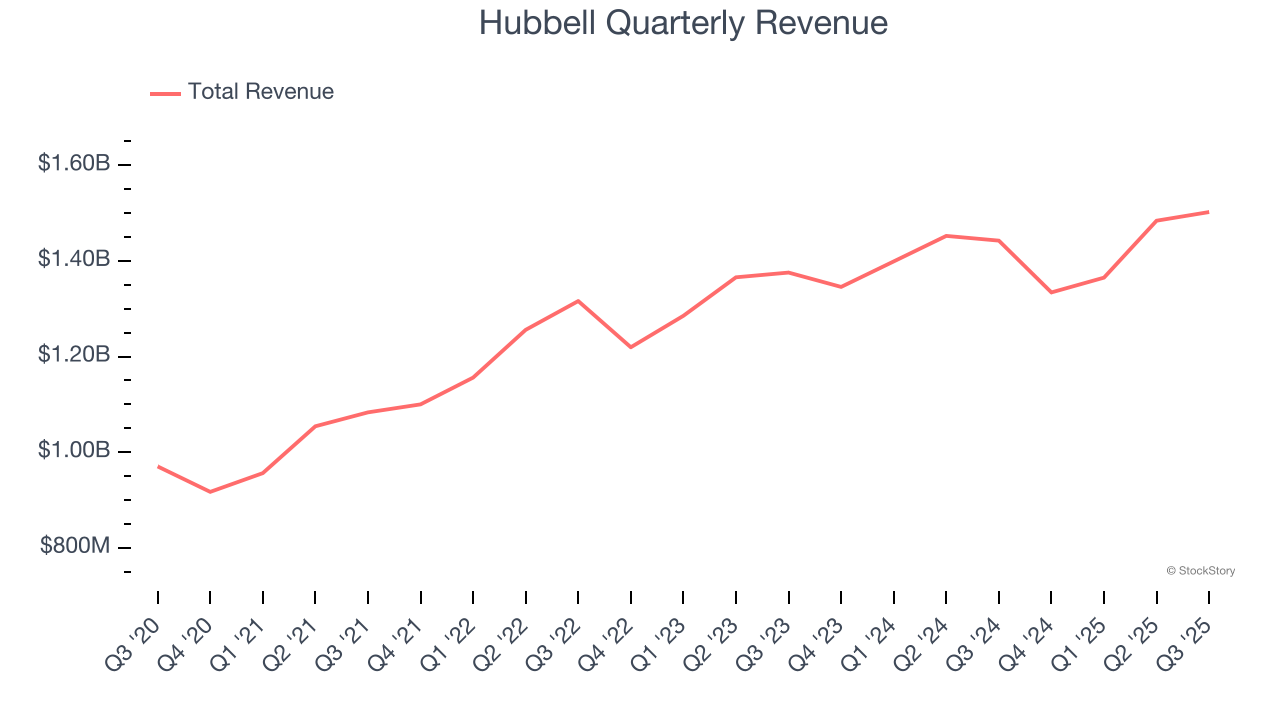
We at StockStory place the most emphasis on long-term growth, but within industrials, a half-decade historical view may miss cycles, industry trends, or a company capitalizing on catalysts such as a new contract win or a successful product line. Hubbell’s recent performance shows its demand has slowed as its annualized revenue growth of 4.1% over the last two years was below its five-year trend. We also note many other Electrical Systems businesses have faced declining sales because of cyclical headwinds. While Hubbell grew slower than we’d like, it did do better than its peers. 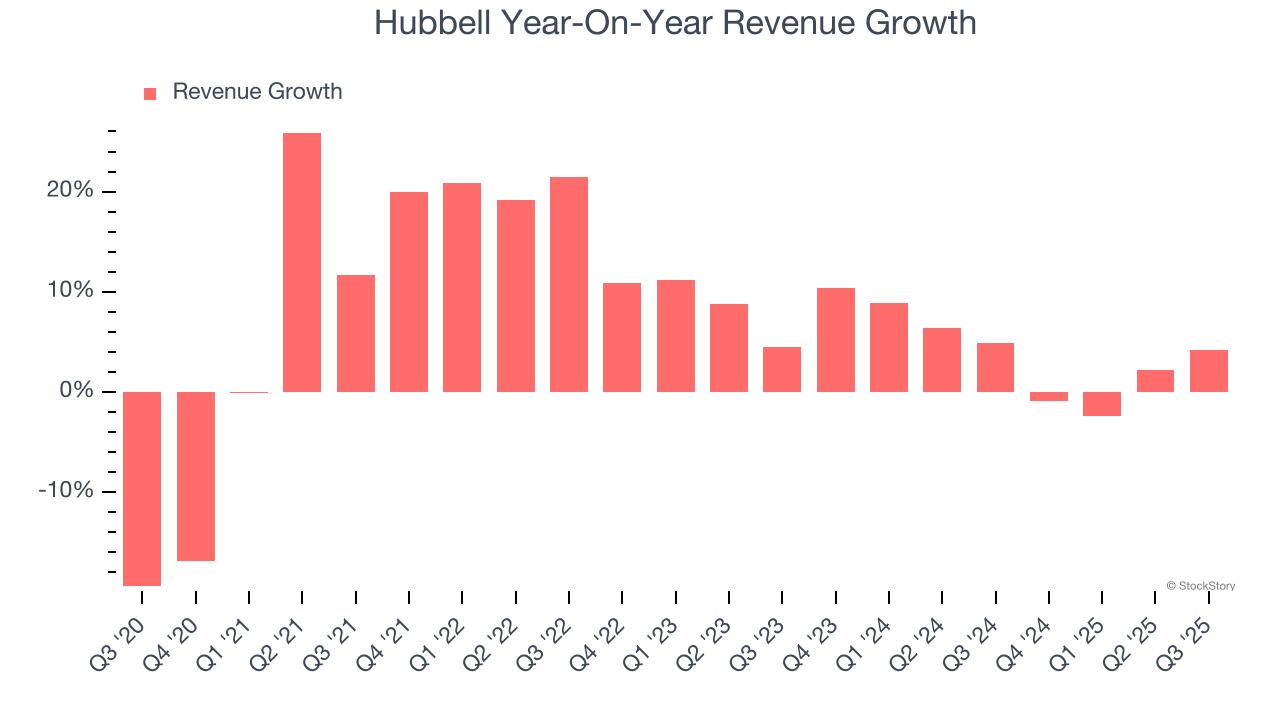
We can dig further into the company’s sales dynamics by analyzing its organic revenue, which strips out one-time events like acquisitions and currency fluctuations that don’t accurately reflect its fundamentals. Over the last two years, Hubbell’s organic revenue averaged 1.6% year-on-year growth. Because this number is lower than its two-year revenue growth, we can see that some mixture of acquisitions and foreign exchange rates boosted its headline results. 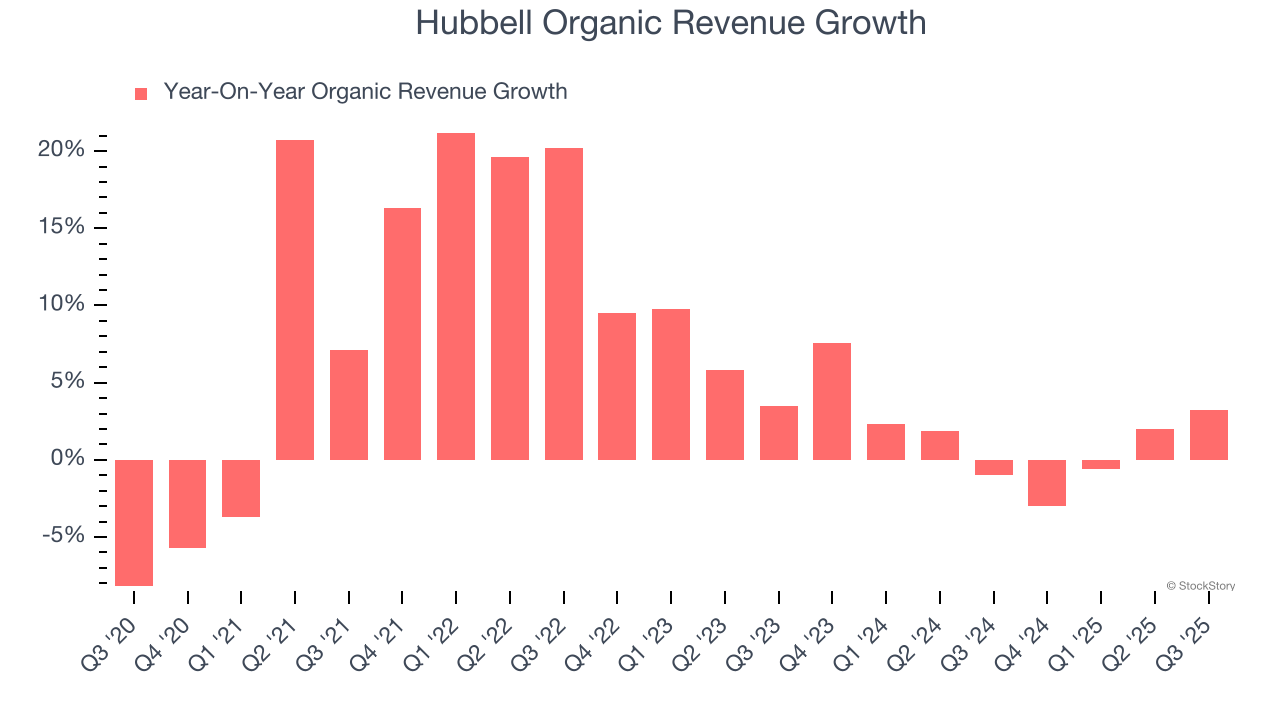
This quarter, Hubbell’s revenue grew by 4.1% year on year to $1.50 billion, falling short of Wall Street’s estimates.
Looking ahead, sell-side analysts expect revenue to grow 8.7% over the next 12 months, an improvement versus the last two years. This projection is above average for the sector and suggests its newer products and services will fuel better top-line performance.
Unless you’ve been living under a rock, it should be obvious by now that generative AI is going to have a huge impact on how large corporations do business. While Nvidia and AMD are trading close to all-time highs, we prefer a lesser-known (but still profitable) stock benefiting from the rise of AI. Click here to access our free report one of our favorites growth stories.
Operating Margin
Operating margin is an important measure of profitability as it shows the portion of revenue left after accounting for all core expenses – everything from the cost of goods sold to advertising and wages. It’s also useful for comparing profitability across companies with different levels of debt and tax rates because it excludes interest and taxes.
Hubbell has been a well-oiled machine over the last five years. It demonstrated elite profitability for an industrials business, boasting an average operating margin of 17.3%.
Looking at the trend in its profitability, Hubbell’s operating margin rose by 7.6 percentage points over the last five years, as its sales growth gave it immense operating leverage.
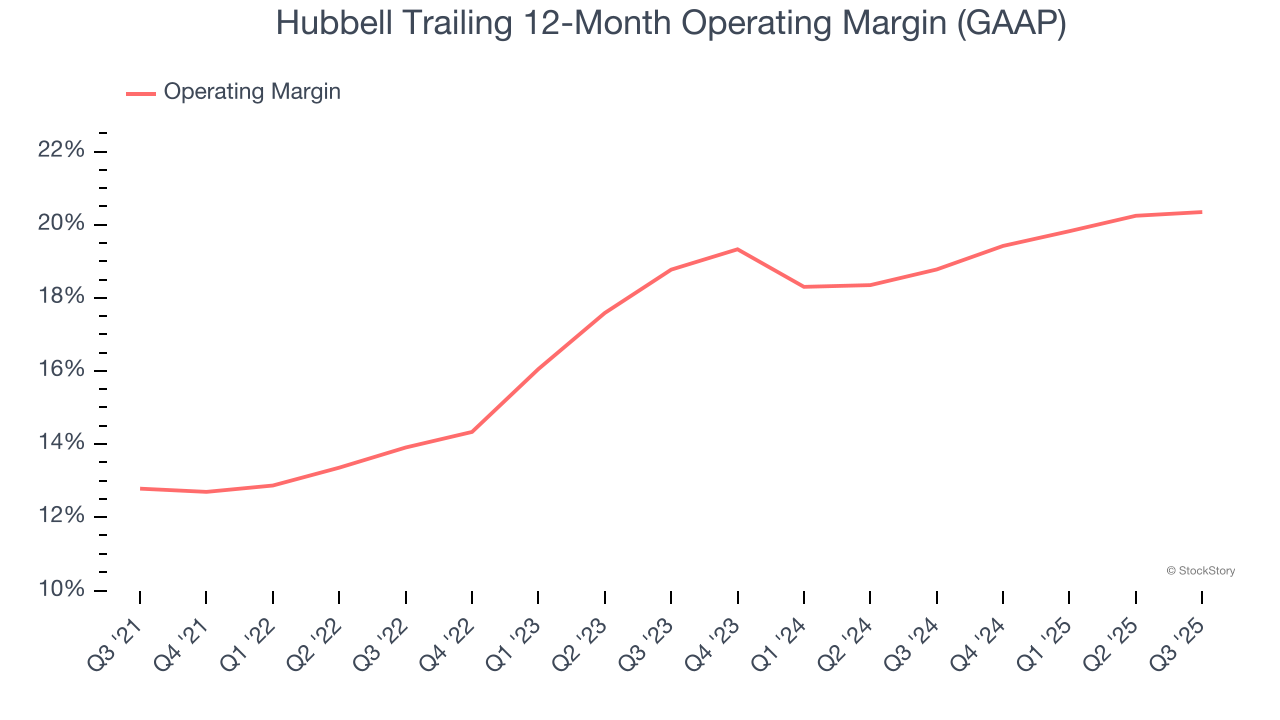
In Q3, Hubbell generated an operating margin profit margin of 22%, in line with the same quarter last year. This indicates the company’s cost structure has recently been stable.
Earnings Per Share
Revenue trends explain a company’s historical growth, but the long-term change in earnings per share (EPS) points to the profitability of that growth – for example, a company could inflate its sales through excessive spending on advertising and promotions.
Hubbell’s EPS grew at an astounding 18.1% compounded annual growth rate over the last five years, higher than its 8% annualized revenue growth. This tells us the company became more profitable on a per-share basis as it expanded.
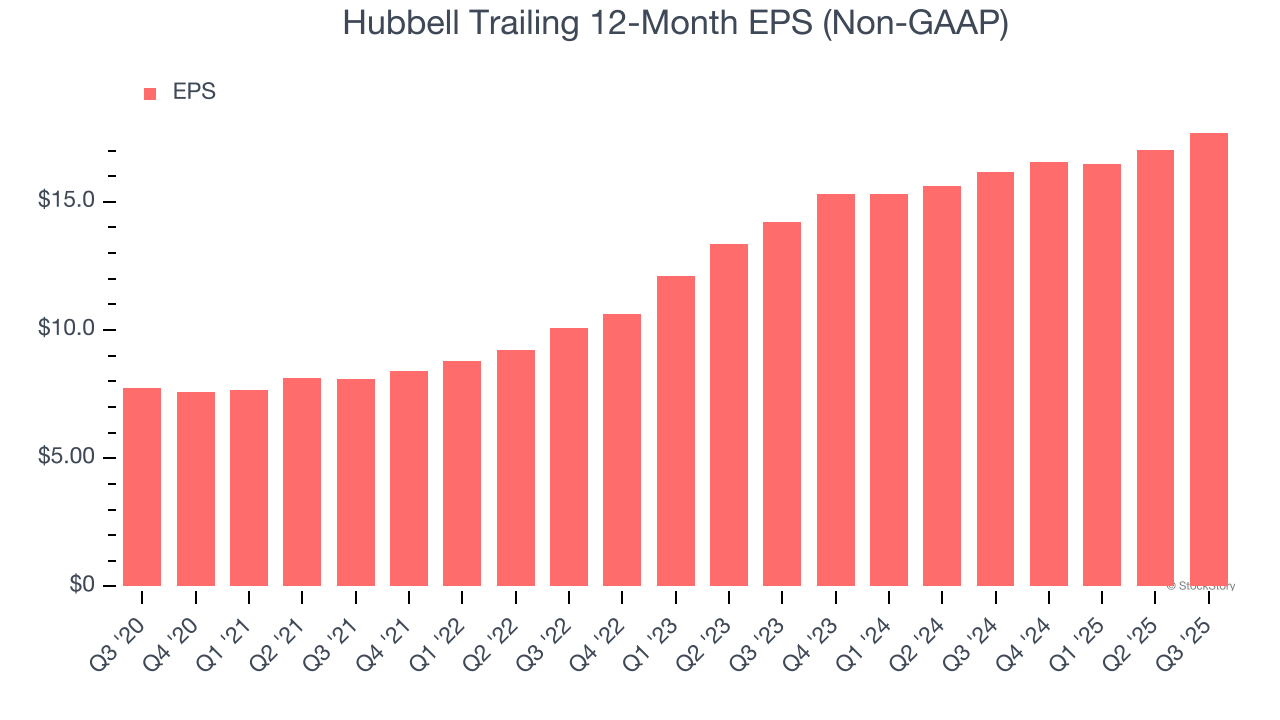
We can take a deeper look into Hubbell’s earnings quality to better understand the drivers of its performance. As we mentioned earlier, Hubbell’s operating margin was flat this quarter but expanded by 7.6 percentage points over the last five years. On top of that, its share count shrank by 2%. These are positive signs for shareholders because improving profitability and share buybacks turbocharge EPS growth relative to revenue growth. 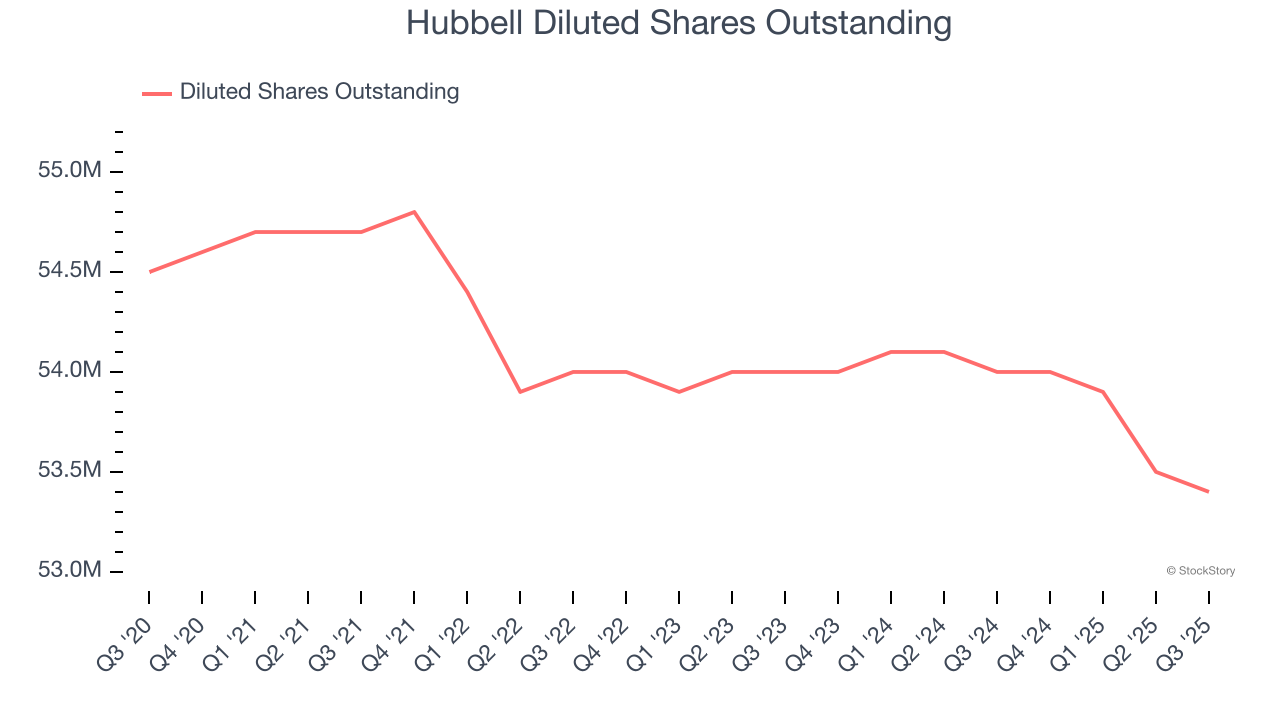
Like with revenue, we analyze EPS over a shorter period to see if we are missing a change in the business.
For Hubbell, its two-year annual EPS growth of 11.5% was lower than its five-year trend. We still think its growth was good and hope it can accelerate in the future.
In Q3, Hubbell reported adjusted EPS of $5.17, up from $4.49 in the same quarter last year. This print beat analysts’ estimates by 3.9%. Over the next 12 months, Wall Street expects Hubbell’s full-year EPS of $17.70 to grow 9.2%.
Key Takeaways from Hubbell’s Q3 Results
It was great to see Hubbell’s full-year EPS guidance top analysts’ expectations. We were also glad its EPS outperformed Wall Street’s estimates. On the other hand, its revenue missed and its organic revenue fell short of Wall Street’s estimates. Overall, this was a softer quarter. The stock traded down 1.6% to $427 immediately following the results.
Hubbell didn’t show it’s best hand this quarter, but does that create an opportunity to buy the stock right now? If you’re making that decision, you should consider the bigger picture of valuation, business qualities, as well as the latest earnings. We cover that in our actionable full research report which you can read here, it’s free for active Edge members.
